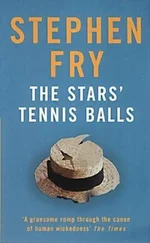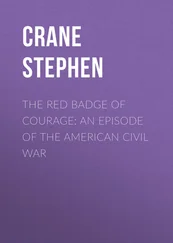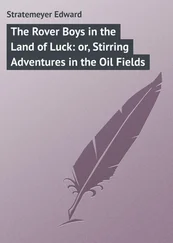Stephen Fry - The Ode Less Travelled - Unlocking The Poet Within
Здесь есть возможность читать онлайн «Stephen Fry - The Ode Less Travelled - Unlocking The Poet Within» весь текст электронной книги совершенно бесплатно (целиком полную версию без сокращений). В некоторых случаях можно слушать аудио, скачать через торрент в формате fb2 и присутствует краткое содержание. Жанр: Старинная литература, на английском языке. Описание произведения, (предисловие) а так же отзывы посетителей доступны на портале библиотеки ЛибКат.
- Название:The Ode Less Travelled: Unlocking The Poet Within
- Автор:
- Жанр:
- Год:неизвестен
- ISBN:нет данных
- Рейтинг книги:3 / 5. Голосов: 1
-
Избранное:Добавить в избранное
- Отзывы:
-
Ваша оценка:
- 60
- 1
- 2
- 3
- 4
- 5
The Ode Less Travelled: Unlocking The Poet Within: краткое содержание, описание и аннотация
Предлагаем к чтению аннотацию, описание, краткое содержание или предисловие (зависит от того, что написал сам автор книги «The Ode Less Travelled: Unlocking The Poet Within»). Если вы не нашли необходимую информацию о книге — напишите в комментариях, мы постараемся отыскать её.
The Ode Less Travelled: Unlocking The Poet Within — читать онлайн бесплатно полную книгу (весь текст) целиком
Ниже представлен текст книги, разбитый по страницам. Система сохранения места последней прочитанной страницы, позволяет с удобством читать онлайн бесплатно книгу «The Ode Less Travelled: Unlocking The Poet Within», без необходимости каждый раз заново искать на чём Вы остановились. Поставьте закладку, и сможете в любой момент перейти на страницу, на которой закончили чтение.
Интервал:
Закладка:
Beethoven actually went so far as to write the following in the score of the Finale of his String Quartet in F major: Muss es sein? Must it be? Es muss sein! It must be!
In poetry this is a familiar structure:Q: Shall I compare thee to a summer’s day?A: Thou art more lovely and more temperate.
It is common in rhetoric too.Ask not what your country can do for youBut what you can do for your country.
This is a deep, instinctive property of so much human communication. In the Greek drama and dance it was called strophe and antistrophe , in the liturgy of the Church it is known as versicle and response .
One might suggest that this is something to do with the in-and-out pumping of the heart itself ( systole and diastole ) and the very breath of life ( inhalation and exhalation ). Yin and yang and other binary oppositions in thought and the natural world come to mind. We also reason dialectically, from problem to solution, from proposition to conclusion, from if to then . It is the copulation of utterance: the means by which thought and expression mimic creation by taking one thing ( thesis ), suggesting another ( antithesis ) and making something new of the coupling ( synthesis ), prosecution, defence, verdict.
The most obvious example of a poem with an if  then structure is of course Kipling’s poem ‘If’, regularly voted ‘the nation’s favourite’. It is written in strict iambic pentameter, but with alternating feminine and masculine line endings throughout. He does this with absolute regularity throughout the poem: switching between lines of weak (eleven syllable) and strong (ten syllable) endings, which gives a characteristic swing to the verse. Try reading out loud each stanza (or verse) below, exaggerating the tenth syllable in each line as you read, tapping the table (or your thigh) and really emphasising the last beat. Do you see how this metrical alternation precisely suggests a kind of dialectical structure?If you can keep your head when all a boutyouAre losing theirs and blaming it on you,If you can trust yourself when all men doubtyouBut make allowance for their doubting too,If you can dream–and not make dreams your master,If you can think–and not make thoughts your aim;If you can meet with Triumph and Dis asterAnd meet those two impostors just the same;And meet those two impostors just the same;If you can fill the unforgiving minuteWith sixty seconds’ worth of distance run,Yours is the Earth and everything that’s init,And–which is more–you’ll be a Man, my son!
then structure is of course Kipling’s poem ‘If’, regularly voted ‘the nation’s favourite’. It is written in strict iambic pentameter, but with alternating feminine and masculine line endings throughout. He does this with absolute regularity throughout the poem: switching between lines of weak (eleven syllable) and strong (ten syllable) endings, which gives a characteristic swing to the verse. Try reading out loud each stanza (or verse) below, exaggerating the tenth syllable in each line as you read, tapping the table (or your thigh) and really emphasising the last beat. Do you see how this metrical alternation precisely suggests a kind of dialectical structure?If you can keep your head when all a boutyouAre losing theirs and blaming it on you,If you can trust yourself when all men doubtyouBut make allowance for their doubting too,If you can dream–and not make dreams your master,If you can think–and not make thoughts your aim;If you can meet with Triumph and Dis asterAnd meet those two impostors just the same;And meet those two impostors just the same;If you can fill the unforgiving minuteWith sixty seconds’ worth of distance run,Yours is the Earth and everything that’s init,And–which is more–you’ll be a Man, my son!
What’s actually happening is that the wider line structures echo the metrical structure: just as the feet go weak- strong, so the lines go weak- strong.
You might put the thought into iambic pentameters:The weaker ending forms a kind of question
The stronger ending gives you your reply.
The finality of downstroke achieved by a strong ending seems to answer the lightness of a weak one. After all, the most famous weak ending there is just happens to be the very word ‘question’ itself…To be, or not to be: that is the question.
It is not a rule, the very phrase ‘question-and-answer’ is only an approximation of what we mean by ‘dialectic’ and, naturally, there is a great deal more to it than I have suggested. Through French poetry we have inherited a long tradition of alternating strong-weak line endings, which we will come to when we look at verse forms and rhyme. The point I am anxious to make, however, is that metre is more than just a ti- tumti- tum: its very regularity and the consequent variations available within it can yield a structure that EXPRESSES MEANING QUITE AS MUCH AS THE WORDS THEMSELVES DO.
Which is not to say that eleven syllable lines only offer questions: sometimes they are simply a variation available to the poet and result in no particular extra meaning or effect. Kipling does demonstrate though, in his hoary old favourite, that when used deliberately and regularly, alternate measures can do more. The metrist Timothy Steele 12has pointed out how Shakespeare, in his twentieth sonnet ‘A woman’s face, with Nature’s own hand painted’ uses only weak endings throughout the poem: every line is eleven syllables. Shakespeare’s conceit in the poem (his image, or overarching concept) is that his beloved, a boy, has all the feminine graces. The proliferation of feminine endings is therefore a kind of metrical pun.
Macbeth’s ‘Tomorrow and tomorrow and tomorrow’ is another celebrated example of iambic pentameter ending with that extra or hypermetrical unstressed syllable. Note, incidentally, that while you would not normally choose to emphasise a word like ‘and’ in a line of poetry, the beauty of Shakespeare’s iambs here is that the rhythm calls for the actor playing Macbeth to hit those ‘ands’ harder than one would in a line like:I want some jam and tea and toast today
With Shakespeare’s line…To morrow and to morrow and to morrow
…the futility and tedium of the succession of tomorrows is all the more manifest because of the metrical position of those ‘ands’. Which of us hasn’t stressed them in sentences like ‘I’ve got to mow the lawn and pick up the kids from school and do the tax returns and write a thank you letter and cancel the theatre tickets and ring the office…’?
An eleven-syllable line was more the rule than the exception in Italian poetry, for the obvious reason that an iambic hendecasyllabic line must have a weak ending, like-a almost-a ever-y word-a in Italian-o. Dante’s Inferno is written in iambic endecasíllabo .Nel mezzo delcamm indi nostra vita
An English translation might go, in iambic pentameter:Mid wayup onthe journey throughour life
There would be no special reason to use hendecasyllables in translating the Inferno : in fact, it would be rather difficult. English, unlike Italian, is full of words that end with a stressed syllable. The very nature of the iamb is its light-heavy progression, it seems to be a deeply embedded feature of English utterance: to throw that away in the pursuit of imitating the metrics of another language would be foolish.
Lots of food for thought there, much of it beyond the scope of this book. The point is that the eleven-syllable line is open to you in your iambic verse.
Why not nine syllables, you may be thinking? Why not dock a syllable and have a nine-syllable line with a weak ending?Let’s sitour selvesbe sidethis river
Well, this docking, this catalexis , results in an iambic tetrameter (four accents to a line) with a weak ending, that extra syllable. The point about pentameter is that it must have five stresses in it. The above example has only four , hence tetra meter (pronounced, incidentally, tetrAmeter, as pentameter is pentAmeter).
Writers of iambic pentameter always add an unstressed syllable to make eleven syllables with five beats, they don’t take off a strong one to make four. They must keep that count of five. If you choose iambic pentameter you stick to it. The heroic line, the five-beat line, speaks in a very particular way, just as a waltz has an entirely different quality from a polka. A four-beat line, a tetrameter, has its individual characteristics too as we shall soon see, but it is rare to mix them up in the same poem. It is no more a rule than it is a rule never to use oil paints and watercolours in the same picture, but you really have to know what you’re doing if you decide to try it. For the purposes of these early exercises, we’ll stay purely pentametric.
Читать дальшеИнтервал:
Закладка:
Похожие книги на «The Ode Less Travelled: Unlocking The Poet Within»
Представляем Вашему вниманию похожие книги на «The Ode Less Travelled: Unlocking The Poet Within» списком для выбора. Мы отобрали схожую по названию и смыслу литературу в надежде предоставить читателям больше вариантов отыскать новые, интересные, ещё непрочитанные произведения.
Обсуждение, отзывы о книге «The Ode Less Travelled: Unlocking The Poet Within» и просто собственные мнения читателей. Оставьте ваши комментарии, напишите, что Вы думаете о произведении, его смысле или главных героях. Укажите что конкретно понравилось, а что нет, и почему Вы так считаете.










